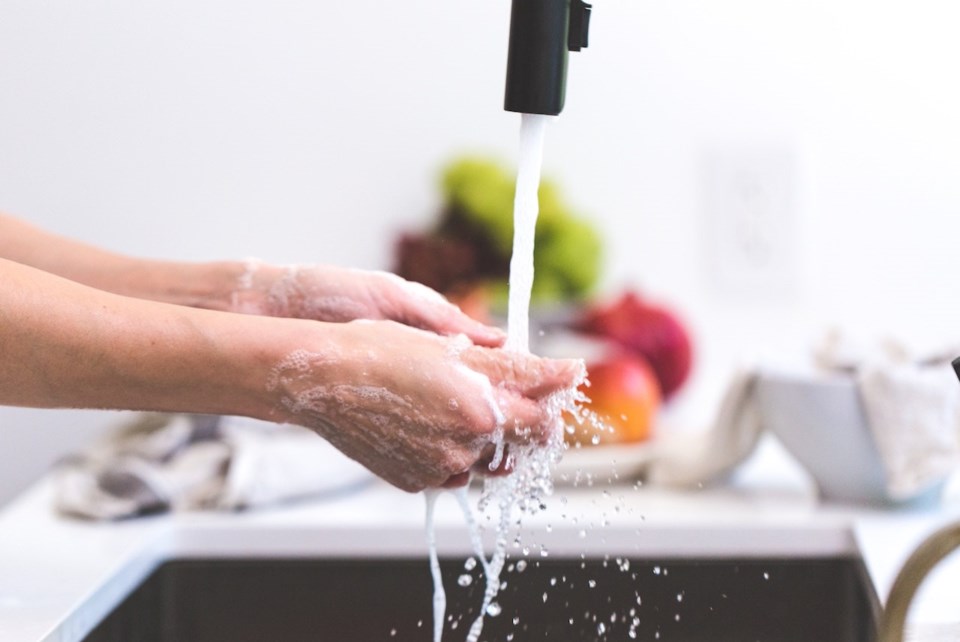Our province has done well in flattening the curve of the spread of COVID-19 infections compared to other communities throughout North America.
We owe much to the wise leadership of Dr. Bonnie Henry and Minister of Health Adrian Dix.
They have kept us well-informed with the most current information with their nearly daily televised updates, and their recommendations have been appropriate throughout the evolution of our pandemic.
The General Rules for Staying Safe
The advice for each of us to reduce our risks of exposure and spreading infections to others remain the same:
- Maintain a two-metre (or six-foot) distance from others outside of our homes.
- Wear a face mask (such as a cloth mask) in situations where you cannot maintain this safe distance from others.
- Wash your hands frequently.
The clean hands advice requires clarification. What does it mean to wash your hands frequently?
Counting and Singing are Not Enough
The simple advice to wash your hands with soap and water or an alcohol-containing hand sanitizer does require clarification in order to effectively reduce your risks.
Simply counting for 20 seconds or singing “Happy Birthday” twice may not be sufficient. If you aren’t going through the right motions and doing them at the appropriate times, you won’t be protected.
It’s like kids singing the Barney “Clean Up” song while dancing around the room, not picking up any of their toys.
How COVID-19 is Spread
The novel coronavirus is mainly spread through respiratory droplets. These are produced by breathing, laughing, talking, sneezing and coughing. They quickly drop to the ground within that buffer zone.
If someone with COVID-19 contaminates their hands by coughing or sneezing into their hands or simply by touching their eyes, nose or mouth, what they next touch can be contaminated with the virus. Those surfaces may include handrails, door handles, washroom sinks, elevator buttons, phones and crosswalk controls.
If you touch those inanimate surfaces and subsequently touch your eyes, nose or mouth, you can acquire an infection.
However, if you clean your hands after touching these surfaces before you touch your own eyes, nose or mouth you will significantly reduce your risks of infection.
You can reduce your risk of passing an infection to others by sneezing or coughing into your sleeve, wearing a face mask and cleaning your hands after touching your face.
How to Clean Your Hands Effectively
Use either soap and water or a loonie-sized amount of hand sanitizer.
Clean the entire surface of all parts of both hands. This includes all sides of each finger, both thumbs, the palms and the backs of both hands, your fingertips and all sides of both wrists.
Studies have shown that most people do not effectively clean the fingertips, between the fingers, the thumbs and the backs of their hands and fingers.
Consider posting my Twenty Second Hand Cleaning Meditation by your sinks at home or work. It takes about 20 seconds to read or recite, and it will remind you to cover these important oft-neglected areas. It also reaffirms why we are doing all this.
The Twenty Second Hand Cleaning Meditation
As I thoroughly clean each finger and thumb, including the tips and all sides,
I remember both palms and the back of each hand and circle around each wrist.
Just as each finger is part of a hand, each hand the body whole, I am a part of a greater whole: my family and all humankind.
As I pause and reflect on the people I love, I care for myself and my world.
Dr. Davidicus Wong is a family physician. He was the founding chair and lead physician of the Burnaby Division of Family Practice and continues to serve on the board. His Healthwise Column appears regularly in this paper. For more on achieving your positive potential in life, read his blog at davidicuswong.wordpress.com.



